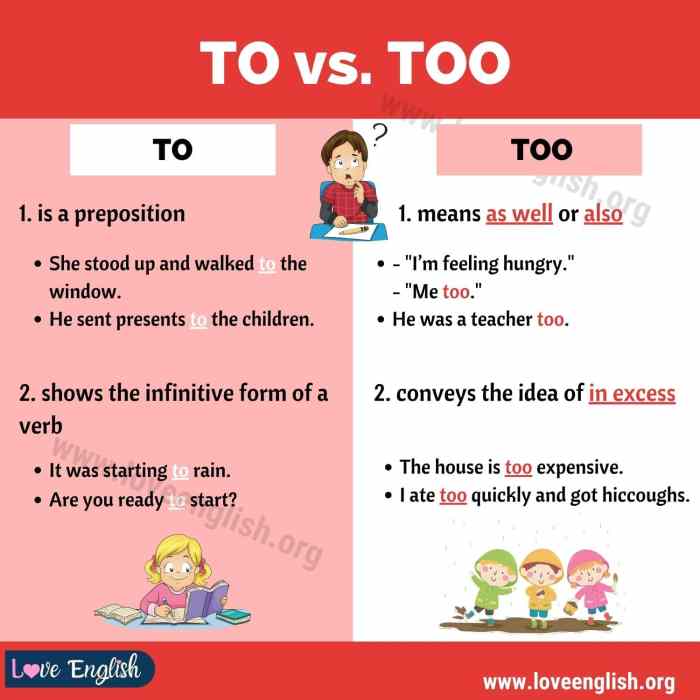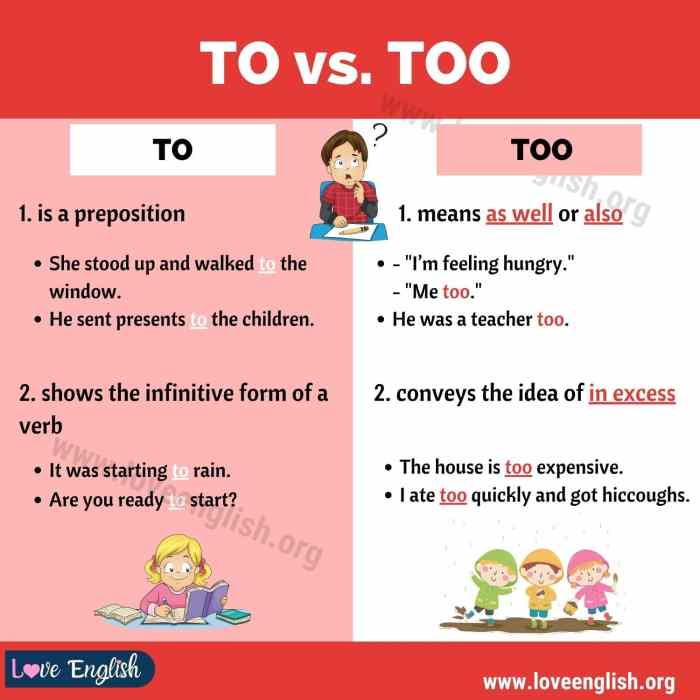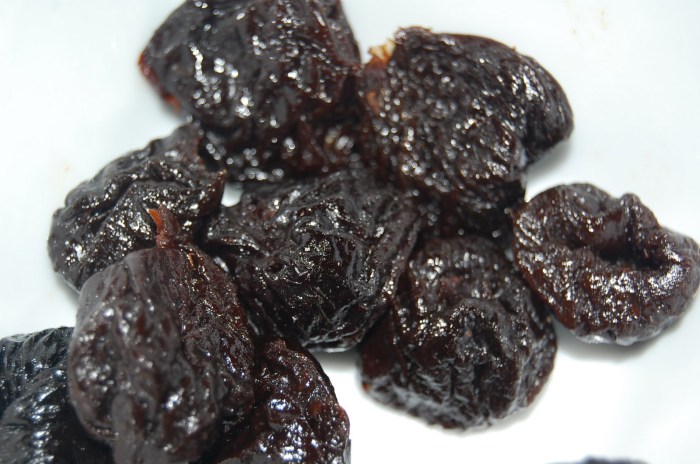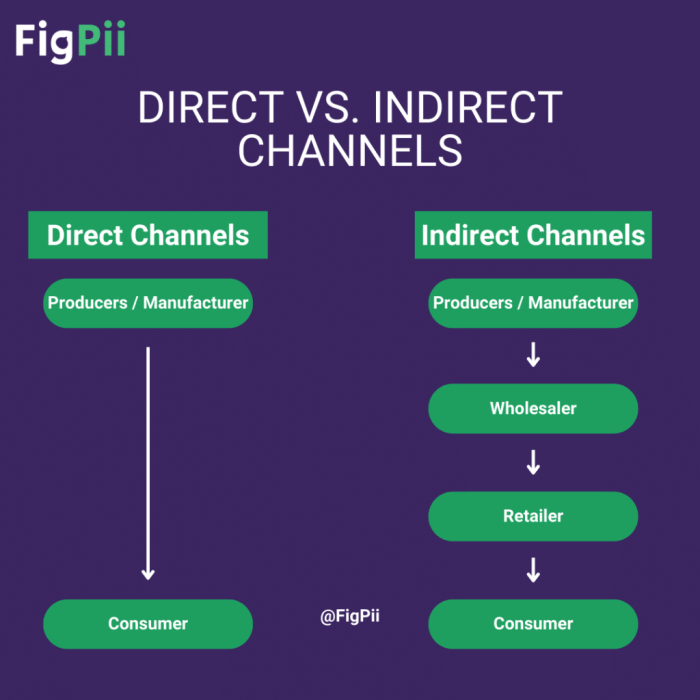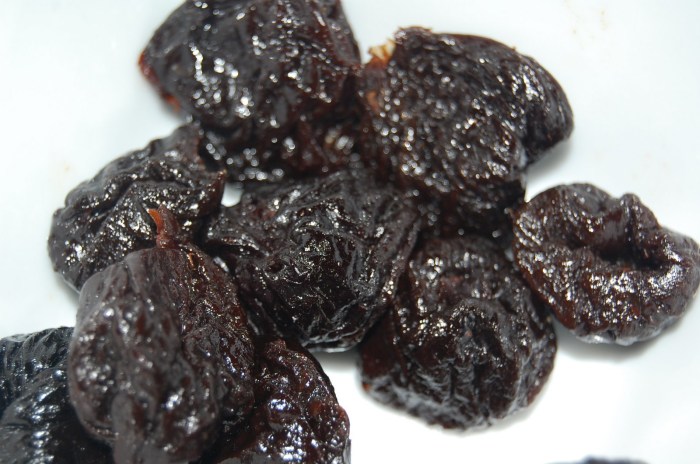Foods to ease constipation are key to a healthy digestive system. Constipation, a common ailment, can be frustrating and uncomfortable. Fortunately, dietary changes can make a world of difference. This guide explores various fiber-rich foods, fruits, and vegetables that promote regularity, and even delves into other important dietary considerations for optimal bowel health.
Understanding the different types of fiber, like soluble and insoluble, is crucial for maximizing their benefits. This article provides a comprehensive overview, including a table comparing these types of fiber, highlighting their unique roles in digestion. You’ll also find practical tips on incorporating high-fiber foods into your daily meals, along with delicious recipes. Plus, we’ll discuss the importance of hydration, meal timing, and even potential foods to avoid for constipation relief.
Introduction to Constipation Relief Foods
Feeling sluggish and uncomfortable? Constipation, a common digestive issue, affects many people worldwide. It’s characterized by infrequent bowel movements, often with hard, dry stools. This discomfort can significantly impact daily life, affecting both physical and emotional well-being.Understanding the causes of constipation is key to managing it effectively. Factors like a low-fiber diet, lack of physical activity, certain medications, and underlying health conditions can contribute to this issue.
Dietary changes are often a crucial first step in relieving constipation, as a well-balanced diet rich in specific foods can stimulate regular bowel movements. By focusing on fiber-rich foods, we can promote healthy digestion and prevent future episodes of constipation.
Fiber-Rich Diets for Bowel Health
A diet rich in fiber is essential for maintaining healthy bowel movements. Fiber acts as a bulking agent in the digestive tract, softening stool and promoting regular elimination. This crucial role in digestive health makes it an important consideration for individuals experiencing constipation. Different types of fiber contribute uniquely to bowel health, and understanding their respective characteristics is important for designing an effective dietary plan.
Types of Dietary Fiber
Fiber is categorized into two main types: soluble and insoluble. These differ in their properties and effects on digestion.
| Fiber Type | Description | Food Sources | Effect on Digestion |
|---|---|---|---|
| Soluble Fiber | Dissolves in water, forming a gel-like substance in the digestive tract. | Oats, barley, beans, lentils, apples, citrus fruits, carrots | Slows down digestion, helps regulate blood sugar levels, and can lower cholesterol. This gel-like consistency adds bulk to the stool, making it softer and easier to pass. |
| Insoluble Fiber | Does not dissolve in water. Adds bulk to the stool. | Whole grains (wheat bran, brown rice), vegetables (broccoli, carrots, celery), nuts, seeds | Increases stool bulk, promotes regular bowel movements, and helps prevent constipation by adding roughage to the digestive process. This type of fiber helps keep the digestive tract moving smoothly. |
Understanding the differences between these types of fiber allows individuals to tailor their diet to better manage their constipation. A balanced intake of both soluble and insoluble fiber provides the best support for a healthy digestive system.
High-Fiber Foods for Constipation Relief: Foods To Ease Constipation
A healthy digestive system is crucial for overall well-being. Constipation, a common ailment, can be effectively managed by incorporating high-fiber foods into your diet. These foods promote regularity and a smoother bowel movement, contributing to a more comfortable and healthy lifestyle.High-fiber foods are an excellent way to address constipation because they add bulk to your stool, stimulating the muscles in your intestines to contract and move waste more efficiently.
This increased movement prevents the stool from becoming hard and compacted, reducing the likelihood of straining during bowel movements. Choosing a variety of high-fiber foods ensures you get a diverse range of nutrients beneficial for your entire body.
Specific High-Fiber Foods
A wide array of foods are excellent sources of fiber. The following list highlights five key high-fiber foods known for their effectiveness in easing constipation:
- Legumes: Legumes, including beans, lentils, and chickpeas, are nutritional powerhouses packed with soluble and insoluble fiber. Soluble fiber dissolves in water, forming a gel-like substance that helps soften stool and promotes regular bowel movements. Insoluble fiber adds bulk to the stool, facilitating its passage through the digestive tract. Their high protein content also contributes to satiety and overall health.
- Fruits: Fruits like berries, apples, pears, and prunes are excellent sources of fiber. The fiber content varies significantly between different fruits, with some offering more soluble fiber than others. For instance, apples are a good source of both soluble and insoluble fiber, contributing to their ability to soften and bulk up stool.
- Vegetables: Vegetables like broccoli, spinach, Brussels sprouts, and carrots provide essential nutrients and a significant amount of fiber. The different types of vegetables contain varying amounts of soluble and insoluble fiber, contributing to their overall impact on digestion. For example, broccoli is known for its high fiber content, which aids in regular bowel movements.
- Whole Grains: Whole grains, such as brown rice, quinoa, oats, and whole-wheat bread, are rich in both soluble and insoluble fiber. The presence of the entire grain, including the bran and germ, provides a higher fiber content compared to refined grains. Oats, in particular, are known for their soluble fiber content, which can help lower cholesterol levels and promote satiety.
- Nuts and Seeds: Nuts and seeds, like almonds, chia seeds, flaxseeds, and pumpkin seeds, offer a concentrated dose of fiber along with healthy fats and protein. Chia seeds and flaxseeds, in particular, are known for their high soluble fiber content, which can help regulate bowel movements. Their consumption should be mindful due to the higher calorie content compared to other options.
Fiber Content and Nutritional Benefits
| Food | Fiber (grams per 100g) | Other Nutrients |
|---|---|---|
| Legumes (e.g., lentils) | 10-20 | Protein, iron, folate |
| Fruits (e.g., apples) | 2-5 | Vitamins, minerals, antioxidants |
| Vegetables (e.g., broccoli) | 3-6 | Vitamins, minerals, antioxidants |
| Whole Grains (e.g., brown rice) | 4-8 | Vitamins, minerals, complex carbohydrates |
| Nuts and Seeds (e.g., almonds) | 6-10 | Healthy fats, protein |
The table above provides a general overview of the fiber content in some high-fiber foods. Individual amounts may vary depending on the specific food and preparation methods.
Speaking of digestive health, fiber-rich foods are key for preventing constipation. Fruits like prunes and berries, along with plenty of vegetables, are great choices. But sometimes, unexpected health concerns arise, like needing an IUD inserted. If you’re considering that procedure, knowing what to expect during an IUD insertion can help ease any anxieties. For a comprehensive guide, check out this helpful resource: what to expect during an iud insertion.
Ultimately, a healthy diet, including plenty of fiber, is crucial for overall well-being and can significantly improve your digestive health.
Taste and Texture Comparisons
The taste and texture of high-fiber foods vary considerably. Legumes, for instance, can be quite bland if not prepared correctly. Fruits offer a range of flavors, from sweet berries to tart apples. Vegetables like broccoli and carrots have a distinct flavor and texture. Whole grains provide a satisfying texture and mild flavor.
Nuts and seeds offer a unique crunch and a more pronounced flavor profile.
Recipes Using High-Fiber Foods
High-fiber foods can be incorporated into various meals. Here are some sample recipes:
Breakfast
- Oatmeal with berries and nuts: Combine cooked oatmeal with your favorite berries and a handful of nuts for a delicious and fiber-rich breakfast.
Lunch
- Lentil soup with whole-wheat bread: A hearty and fiber-filled lentil soup, paired with whole-wheat bread, makes for a satisfying lunch.
Dinner
- Quinoa salad with roasted vegetables: Quinoa, roasted vegetables, and a light vinaigrette make for a balanced and fiber-rich dinner.
Fruits and Vegetables for Constipation Relief
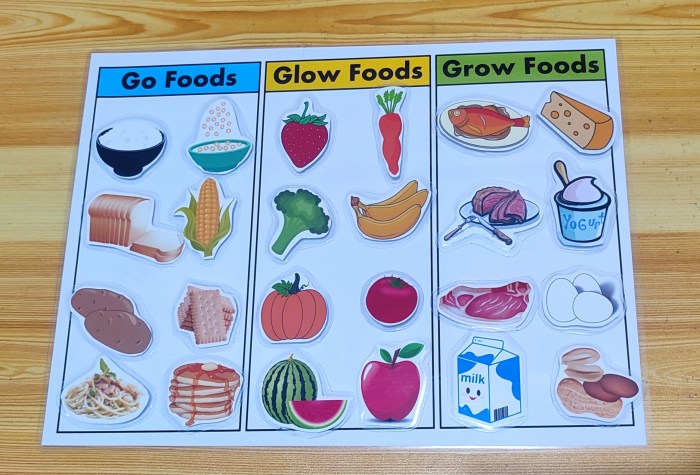
Beyond fiber-rich whole grains and legumes, fruits and vegetables play a vital role in promoting digestive health and alleviating constipation. These vibrant sources of vitamins, minerals, and beneficial compounds contribute to a healthy gut microbiome and smooth bowel movements. The diverse array of flavors and textures in fruits and vegetables makes incorporating them into your diet enjoyable and nutritious.
Types of Fruits and Vegetables for Regularity
Fruits and vegetables are not created equal when it comes to their fiber content and ability to ease constipation. Certain types naturally contain higher amounts of soluble and insoluble fiber, which are both crucial for healthy digestion. These fiber types help to bulk up stool, promoting regular bowel movements.
Examples of Fiber-Rich Fruits and Vegetables
Numerous fruits and vegetables excel at promoting regularity. Apples, berries, pears, and prunes are excellent choices for a natural laxative effect. Leafy greens like spinach and kale, along with root vegetables like carrots and sweet potatoes, are packed with fiber and essential nutrients.
Classification of Fruits and Vegetables by Fiber Content
| Fruit/Vegetable | Fiber Content (Approximate grams per 100g serving) | Constipation-Relieving Properties |
|---|---|---|
| Apples | 2-3 | Soluble and insoluble fiber; aids in stool bulk and softness. |
| Bananas | 1-2 | Potassium and soluble fiber; promotes hydration and regularity. |
| Berries (strawberries, blueberries, raspberries) | 2-4 | High in antioxidants and soluble fiber; supports healthy gut flora. |
| Broccoli | 3-5 | Excellent source of insoluble fiber; aids in stool bulk. |
| Carrots | 2-3 | Rich in soluble fiber; promotes hydration and stool softness. |
| Pears | 2-4 | High in soluble fiber; contributes to bulk and softness of stool. |
| Prunes | 5-7 | High in sorbitol, a natural laxative; softens stool and promotes movement. |
| Spinach | 2-3 | Excellent source of insoluble fiber; aids in stool bulk. |
| Sweet Potatoes | 3-4 | Rich in soluble and insoluble fiber; promotes regularity and hydration. |
Preparation Methods to Maximize Fiber Intake
Consuming fruits and vegetables in their whole, unprocessed forms maximizes fiber intake. Avoid over-cooking or excessive processing, which can diminish fiber content. Adding fruits and vegetables to your breakfast, lunch, and dinner can enhance your fiber intake significantly. Steaming, grilling, or roasting are excellent preparation methods that preserve nutrients and fiber.
Best Fruits and Vegetables for Different Meal Times
The best fruits and vegetables for different meal times depend on your individual needs and preferences. For breakfast, berries, apples, and bananas are excellent choices, offering fiber and natural sugars for sustained energy. Mid-morning snacks can benefit from carrots, celery, or a small handful of berries. For lunch and dinner, leafy greens, broccoli, carrots, and other root vegetables can complement your meal and contribute to your daily fiber intake.
Other Dietary Considerations for Constipation
Constipation isn’t just about the foods you
- eat*; it’s also about how you
- eat* them. Understanding the interplay between hydration, meal timing, portion sizes, and even food combinations can significantly impact your digestive health. This section delves into these crucial factors, providing practical tips to optimize your digestive journey.
Proper dietary habits, coupled with a high-fiber intake, are essential for promoting regular bowel movements. By understanding and addressing these considerations, you can better manage constipation and experience improved digestive well-being.
The Importance of Hydration
Adequate hydration is vital for healthy bowel movements. Water softens stool, allowing it to pass more easily through the digestive tract. Insufficient water intake can lead to hard, dry stools, increasing the risk of constipation. Aim for a daily intake of at least eight glasses of water, and consider increasing your fluid intake with other beverages like herbal teas and clear broths.
Listen to your body’s signals; thirst is a clear indication of dehydration.
Regular Mealtimes and Portion Control
Establishing regular mealtimes and mindful portion control can significantly influence digestion. A consistent eating schedule helps regulate the digestive system, allowing it to anticipate and respond effectively to mealtime. Avoiding large, infrequent meals can prevent digestive overload, reducing the risk of constipation. When consuming larger portions, the digestive system may struggle to process the food efficiently, potentially leading to digestive discomfort.
Consider smaller, more frequent meals throughout the day for improved digestion.
Foods That Can Exacerbate Constipation
Certain foods can hinder bowel movements and contribute to constipation. Processed foods, often low in fiber and high in fat, can slow down digestion. Highly refined grains, such as white bread and white rice, are also less effective in promoting healthy bowel movements compared to whole grains. Furthermore, excessive consumption of dairy products, especially in individuals with lactose intolerance, can lead to digestive issues.
Effects of Food Combinations on Digestion
Different food combinations can affect digestion in various ways. For instance, consuming large amounts of fatty foods with high-fiber foods can sometimes slow down digestion and potentially lead to digestive discomfort. Also, consuming excessive amounts of certain foods that are high in sugar can lead to digestive issues, which can contribute to constipation. Similarly, mixing certain types of proteins with certain types of carbohydrates might lead to different levels of digestive response in individuals.
It’s important to pay attention to how your body responds to different food combinations and adjust your dietary choices accordingly.
Trying to find foods that help with constipation? Fiber-rich foods like fruits, vegetables, and whole grains are a great start. But did you know that certain skin conditions, like papulopustular rosacea, can also be impacted by diet? Managing the inflammation associated with this condition, as detailed in this helpful article on how to deal with papulopustular rosacea , might also benefit from incorporating foods known to ease digestion.
So, next time you’re stocking up on fruits and veggies, remember that a healthy gut can lead to a healthier you overall!
Foods to Avoid for Constipation Relief
| Category | Examples | Reasoning |
|---|---|---|
| Processed Foods | Fast food, packaged snacks, white bread, pastries | Often low in fiber and high in unhealthy fats, hindering digestion. |
| Highly Refined Grains | White bread, white rice, white pasta | Lower in fiber compared to whole grains, affecting stool consistency. |
| Excessive Dairy Products | Full-fat dairy, ice cream, cheese | Can cause digestive issues in individuals sensitive to lactose. |
| Foods High in Sugar | Candy, sugary drinks, processed desserts | Can disrupt the balance of gut bacteria and lead to digestive discomfort. |
| Foods High in Fat | Fried foods, fatty meats, butter | Can slow down digestion and potentially cause digestive discomfort. |
Promoting Bowel Health with Dietary Changes

Nourishing your gut isn’t just about relieving occasional constipation; it’s about cultivating a healthy, thriving digestive system for long-term well-being. A balanced diet plays a crucial role in maintaining gut health, influencing everything from nutrient absorption to overall immunity. Dietary changes can positively impact your gut microbiome, leading to a more efficient and comfortable digestive process.Dietary choices profoundly impact the composition of your gut microbiome, a complex community of microorganisms that reside in your digestive tract.
The right foods can encourage the growth of beneficial bacteria, while poor choices can hinder their development, potentially leading to digestive issues. A healthy gut microbiome is vital for optimal digestion, nutrient absorption, and even mental well-being.
The Importance of Probiotics and Prebiotics
Probiotics and prebiotics are essential components of a diet aimed at improving gut health. Probiotics are live microorganisms that offer health benefits when consumed in adequate amounts, while prebiotics are non-digestible food ingredients that promote the growth of beneficial bacteria in the colon. They work synergistically to foster a balanced and robust gut microbiome.
Probiotic-Rich Foods, Foods to ease constipation
A variety of foods naturally contain probiotics. These include fermented dairy products like yogurt and kefir, as well as fermented vegetables such as sauerkraut and kimchi. Other excellent sources include kombucha, certain cheeses, and some cultured vegetables. Incorporating these foods into your diet can contribute significantly to maintaining a healthy gut.
- Yogurt: A staple for gut health, yogurt provides live and active cultures that contribute to a balanced gut microbiome. Choose plain, unsweetened varieties for maximum probiotic benefit. Look for labels that specify “live and active cultures.”
- Kefir: Similar to yogurt, kefir is a fermented milk product with a tangy taste. It’s another excellent source of probiotics, offering a diverse range of beneficial bacteria.
- Sauerkraut: This fermented cabbage dish is a powerhouse of probiotics. It’s a versatile addition to meals, enhancing flavor and boosting gut health.
- Kimchi: A Korean fermented cabbage dish, kimchi boasts a spicy flavor profile and a significant probiotic content. It adds a unique zest to meals and supports a healthy gut.
- Kombucha: A fermented tea beverage, kombucha offers probiotics and other beneficial compounds. Its tangy flavor adds a refreshing element to your diet while supporting a balanced gut.
Mindful Eating Habits
The way you eat can significantly impact your digestive health. Slow, mindful eating habits allow your body to properly process food, reducing the risk of digestive discomfort. Taking smaller bites, chewing thoroughly, and savoring each meal can aid digestion and improve overall gut health. Pay attention to your body’s hunger and fullness cues, preventing overeating, which can lead to digestive issues.
Illustrative Digestive Process Infographic
| Stage | Description | Relevant Foods |
|---|---|---|
| Ingestion | Food enters the mouth, is broken down by chewing and saliva, and is swallowed. | All foods, especially those rich in fiber. |
| Digestion | Food is broken down into smaller molecules in the stomach and small intestine. | Fruits, vegetables, whole grains, lean proteins. |
| Absorption | Nutrients are absorbed into the bloodstream. | Probiotic-rich foods, fiber-rich foods. |
| Elimination | Undigested materials are eliminated from the body. | High-fiber foods, prebiotics. |
Note: This infographic illustrates a simplified representation of the digestive process. The actual process is more complex and involves many other organs and systems.
Specific Dietary Needs and Constipation
Dietary needs for constipation relief aren’t one-size-fits-all. Different life stages and health conditions require tailored approaches to ensure proper bowel function. Understanding these nuances is key to effective constipation management. This section delves into specific dietary considerations for various populations, emphasizing the importance of personalized guidance from healthcare professionals.Specific dietary needs for constipation relief vary significantly based on age, pregnancy status, and underlying health conditions.
Proper nutrition is crucial for overall health and digestive function, and understanding these needs allows for the development of targeted and safe dietary interventions.
Speaking of digestive health, fiber-rich foods are key for preventing constipation. Fruits like prunes and berries, along with plenty of vegetables, are great choices. But sometimes, other issues pop up, like unusual white discharge after your period. If you’re experiencing this, it’s a good idea to check out resources like this page on white discharge after period for more information.
Fortunately, focusing on a high-fiber diet can help keep your gut happy and prevent future constipation problems.
Dietary Considerations for Pregnant Women
Pregnancy often brings hormonal changes that can affect bowel movements. Increased progesterone levels can slow down the digestive system, leading to constipation. Dietary adjustments are crucial to alleviate this discomfort.
- Increased fiber intake is essential. Include foods like fruits (berries, prunes), vegetables (broccoli, spinach), and whole grains (oats, brown rice). Adequate hydration is also vital. Aim for at least eight glasses of water daily.
- Avoid overly processed foods, excessive caffeine, and alcohol, as these can exacerbate constipation. Also, limit dairy products, as they can sometimes cause bloating and discomfort for some individuals.
- Regular physical activity, when safe and approved by a doctor, can support healthy bowel function. Gentle exercise like walking can be beneficial during pregnancy.
Dietary Considerations for Children
Children’s dietary needs for constipation relief differ based on age and developmental stage. Young children may have difficulty consuming enough fiber-rich foods, making it important to introduce them gradually.
- Focus on providing a balanced diet rich in fruits, vegetables, and whole grains. Introduce a variety of fiber-rich foods appropriate for their age and developmental stage.
- Ensure adequate hydration through water, juice, and other healthy beverages. Encourage regular mealtimes and avoid skipping meals, which can disrupt digestive processes.
- Introduce age-appropriate portion sizes of foods and avoid giving too much juice, as it can dilute the beneficial effects of fiber.
Common Misconceptions about Constipation and Dietary Remedies
Many misconceptions surround constipation and its dietary remedies. These misconceptions can lead to ineffective strategies or potentially harmful choices.
- Laxatives are often seen as a quick fix, but prolonged use can disrupt the natural bowel rhythm. A balanced diet, rich in fiber, is generally more sustainable and effective for long-term relief.
- Some believe that consuming large quantities of fruits like grapes or apples alone can cure constipation. While these fruits are high in fiber, a balanced diet is key for effective and sustainable results.
- Over-reliance on certain foods like bananas or prunes is not always recommended. While helpful for some, an over-reliance on these foods without addressing the root cause can lead to imbalances in the diet.
Importance of Consulting a Healthcare Professional
Personalized dietary advice is crucial for effectively managing constipation. A healthcare professional can assess individual needs and recommend tailored strategies.
“A doctor can provide personalized recommendations for dietary changes, considering your specific health condition, medication use, and any other relevant factors.”
A doctor can diagnose the underlying cause of constipation and offer suitable dietary advice. Ignoring the cause and relying solely on dietary remedies can lead to delayed diagnosis and treatment.
Importance of Listening to Your Body’s Signals
Pay attention to your body’s signals related to bowel movements. Regularity is key to maintaining healthy digestive function. Identify patterns and consult with a healthcare professional if needed.Paying attention to the frequency and consistency of your bowel movements can provide valuable insights into your digestive health. Regular bowel movements, typically 1 to 3 times per day, or more often if needed, are considered healthy.
If you experience significant changes or ongoing discomfort, consult a doctor.
Supplementing Dietary Changes for Constipation
Sometimes, dietary changes alone aren’t enough to resolve chronic constipation. In these cases, over-the-counter remedies can offer additional support. Understanding the potential benefits and risks associated with these supplements is crucial for responsible use.Over-the-counter constipation remedies often contain ingredients like fiber supplements, stool softeners, or laxatives. These products aim to stimulate bowel movements or soften stool, making it easier to pass.
However, they should be used cautiously and always in conjunction with a healthy diet and lifestyle. Excessive or prolonged use of these remedies can sometimes disrupt the natural bowel rhythm, leading to dependency or other complications.
Over-the-Counter Remedies for Constipation
Many over-the-counter remedies are available to help with constipation. These products vary in their mechanisms of action, so careful consideration of individual needs and potential side effects is important.
- Fiber Supplements: These supplements, such as psyllium husk or methylcellulose, add bulk to the stool, promoting regularity. They work by absorbing water and increasing the volume of stool, making it easier to pass.
- Stool Softeners: Products like docusate sodium help soften the stool, facilitating easier passage. They work by increasing the water content in the stool, making it less hard and more pliable.
- Laxatives: These products can stimulate bowel movements. Different types of laxatives have different mechanisms of action, some affecting the water content, while others stimulate bowel contractions. Examples include stimulant laxatives, osmotic laxatives, and bulk-forming laxatives.
Potential Risks and Benefits of Supplements
While supplements can be helpful, it’s crucial to be aware of potential risks and benefits. Some supplements can interact with medications or have side effects like bloating, cramping, or dehydration. Benefits, on the other hand, can include improved regularity and a reduction in constipation symptoms.
- Benefits: Supplements can provide relief from constipation symptoms when dietary changes are insufficient. They can improve regularity and reduce discomfort. However, they should be used judiciously, not as a long-term solution.
- Risks: Some individuals may experience side effects like abdominal discomfort, cramping, or diarrhea. Certain supplements may interact with other medications, potentially leading to adverse effects. Long-term or excessive use of laxatives can lead to dependency or disrupt the natural bowel function.
Comparison of Popular Over-the-Counter Remedies
| Product Category | Example Product | Mechanism of Action | Potential Side Effects |
|---|---|---|---|
| Fiber Supplements | Metamucil | Increases stool bulk by absorbing water. | Bloating, gas, cramping. |
| Stool Softeners | Docusate Sodium | Increases water content in stool, making it softer. | Mild cramping, diarrhea in some cases. |
| Laxatives (Stimulant) | Bisacodyl | Stimulates bowel contractions. | Diarrhea, abdominal cramping, dehydration. |
| Laxatives (Osmotic) | Milk of Magnesia | Draws water into the intestines, increasing stool volume. | Bloating, gas, diarrhea. |
Following Dosage Instructions Carefully
“Always follow the dosage instructions provided on the product label carefully.”
Incorrect dosage can lead to adverse effects. Consult a healthcare professional before using any new supplement, especially if you have underlying health conditions or are taking other medications. Gradual increases in dosage are often recommended to allow the body to adjust.
Complementing a Healthy Diet
Supplements should complement, not replace, a healthy diet. A balanced diet rich in fiber, fruits, and vegetables remains essential for overall bowel health. Supplements can provide additional support when dietary changes alone aren’t sufficient to alleviate constipation.
Conclusion
In conclusion, achieving regularity often boils down to a balanced approach to diet. This guide has explored a range of strategies, from the types of fiber that support gut health to the importance of hydration and mindful eating. Remember, a healthy gut is essential for overall well-being. By making smart dietary choices, you can significantly improve your digestive health and feel your best.
If you have persistent issues, always consult with a healthcare professional for personalized advice.




